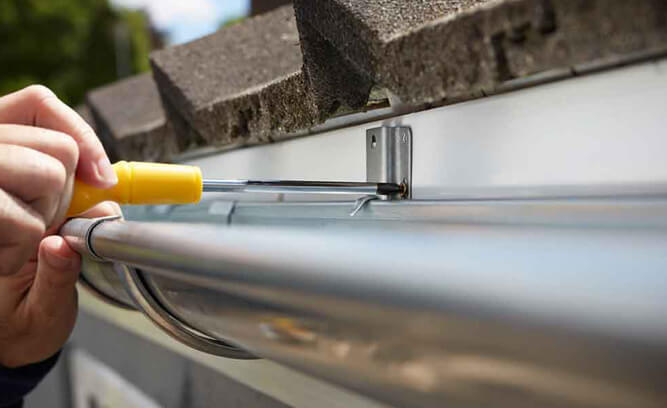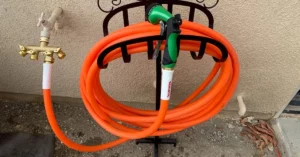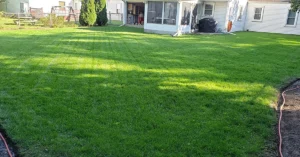
Gutter hangers serve to secure, support, and provide stability to your gutter structure. They help maintain your home’s foundation by preventing the accumulation of water around your house. That’s why it is ideal that you choose the right type of gutter hanger for installation in your home for an improved water drainage functionality.
It would help if you consider these factors before settling down on your home gutter hanger.
The climate in your location
whether cold or hot. Choosing gutter hangers that can easily contract and expand with varying temperatures ensures your gutter system integrity and reduces the cost you are to incur due to regular repairs.
Materials being used
This puts into account the corrosion rates of the gutter hangers, with Aluminum being the most preferred. However, in coastal areas where the moisture contains salty elements, copper is preferred to Aluminum. Due to its resilience to corrosion, copper gutter hangers can serve you for 50 years without damage.
The amount of rainfall in your location
This information is vital as it helps you install gutter hangers that are designed to withstand heavy densities of water.
This post focuses on the best gutter hangers that are durable and functional when it comes to your home water drainage system.
Types of Gutter Hangers
Hidden gutter hangers
Homeowners usually favor this hanger due to its ability to improve a curb appeal. They are installed at the center of the gutter, thus making them invisible. As a result, they usually blend in with K-style gutter, which is the most commonly used gutters. These are the best gutter hangers in areas that experience heavy rainfall.
Spikes and ferrules gutter hangers
They are inexpensive and easy to install. They incorporate spikes driven through a ferrule or a metal tube to fasten the gutter system to your fascia, adding stability to your drainage system. Though this type of gutter hanger is not recommended for use in houses made of a wooden fascia.
This is because the wood can be easily split during the installation project, and an increase in moisture content in your gutter system may quickly rot your home fascia. In addition, these types of gutter hangers commonly use metal spikes which are prone to corrosion and make your gutters loose and sag over time.
Brackets and straps gutter hangers
They are usually used on gutters that are not directly attached to the fascia board-incorporated in the installation of half-round gutters. Best suited for areas that receive heavy rainfall. They are more resistant to contractions and expansions caused by fluctuating temperatures in the environment, making them more long-lasting.
Although these types of hangers can be easily dislodged during cleaning and maintenance, it is recommended that you install gutter guards such as Aluminum wire mesh for reduced maintenance.
Wrap around gutter hangers
They are the strongest gutter hangers as they wrap around your gutter, therefore, improving its agility and resistance to sagging due to heavy densities. It is a hybrid design of the T bar hanger and the bracket and strap gutter hanger.
If you live in an area full of trees, it is essential that you install a gutter guard. This prevents your gutter system from clogging due to the collection of leaves and debris from your rooftop and minimizes time spent on maintenance and cleaning your gutter system.
T bar gutter hanger
Also known as the T strap gutter hanger. It is usually used in suspension systems where the gutter system is not directly attached to a fascia board. Instead, the gutter is suspended from the roof deck using a T bar hanger. These gutter hangers come in different sizes, colors, and varying materials, making it possible for you to choose a gutter hanger that complements your exterior decoration.
Key Takeaway
Gutter hanger installation is a vital project that should be undertaken by a professional. This is because it involves complex procedures such as calculating the amount of rainfall received in your area, the square footage of drainage to be covered around your home foundation, and the sloppiness of your roof.
For a durable and efficient gutter system hanger, enough space during installation should be considered. A standard 3 feet space between gutter hangers should be maintained in areas experiencing average rainfall. In areas where the climate is cold and heavy rainfalls, a 2 feet space should be maintained between the gutter hangers. This is to prevent your gutters from sagging due to increased weights caused by ice and snow.

High Pressure Water Hose Guide
Contents Can You Use a Normal Hose for a Pressure Washer? Does Hose Diameter Affect Pressure? How do I make my garden hose high pressure?

What Is High Pressure Hose Used For?
Contents What is high pressure hose used for? How much PSI do I need to clean my driveway? What PSI is best for washing cars?

Rechargeable Hot Water Bottles Guide
Contents Are rechargeable hot water-bottles safe? How often should you change your hot water-bottle? How long does a rechargeable hot-water bottle last? How do Electric

Will A Heating Pad Ruin A Memory Foam Mattress?
Contents What is a Heat Mattress? Will a Heating Pad Ruin a Memory Foam Mattress? Buy Heating Pad on Amazon Conclusion One of the things

How Do You Clean A Suckle Portable Bottle Warmer?
Contents How does a suckle bottle warmer work? Do I need a bottle warmer if breastfeeding? How do you clean a suckle portable bottle warmer?

3 Tips for Take Care Lawn You Need to Know
Contents Is It Better To Water Lawn in the Morning or at Night? How Many Days a Week Should You Water Your Lawn? Should You

Emily
Head of Content @NotJustType I am a shopaholic and I am here to use my shopping experience and life skill to share to everyone. If you have any question for life, home, garden, you can let me know!
Share this article
Subscribe for weekly updates
